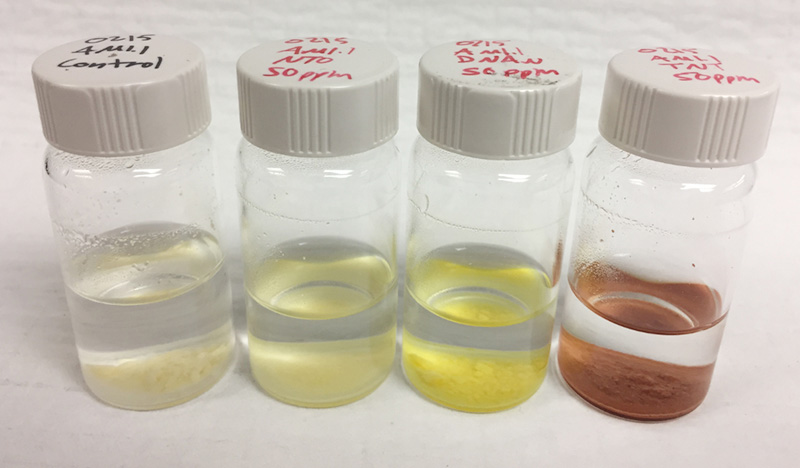Munitions Compound Detection and Removal System
Simple, in situ system identifies and filters harmful munitions contaminants

ERDC innovators have developed a new system to both detect and remove harmful Munitions and Explosives of Concern (MEC) from water. Standard MEC such as Nitrotriazolone (NTO), 2,4-Dinitroanisole (DNAN), and trinitrotoluene (TNT) are toxic to humans and wildlife and contaminate marine waters, terrestrial systems, and groundwater worldwide. In the U.S. alone, these MEC (some of which date back to WWII) affect 15 million acres of land and would require up to $35 billion and years of treatment using traditional methods.
Fortunately, ERDC’s system offers a scalable, cost-effective, and more sustainable solution. The system uses amine-functionalized chitin (AFC) particles derived from arthropod exoskeletons. These particles interact with a water sample, turning it different colors of varying intensity depending on the type and concentration of MEC. Once detected, the munitions are adsorbed by the AFC material, and an ultrafine filter removes the particles. ERDC’s system represents an exciting step beyond conventional methods to tackle this complex challenge.
Benefits:
- Efficient: In situ system both detects and removes MEC from water in concentrations as low as one part per million
- Fast: Colorimetric change begins immediately upon detection, reaching final color and intensity after just 24 hours of exposure
- Scalable: Produced at scale, the system can treat larger bodies of water such as rivers, as well as small ponds and runoffs
- Renewable: Users can desorb MEC from the AFC compound, which can then regenerate itself for reuse
- Low-cost: System uses abundant and inexpensive AFC materials
Applications:
- EPA
-
Environmental remediation (e.g., water treatment, munitions response)
-
Wastewater treatment
-
Military (e.g., bases, munitions response, ranges, ammunitions plants)
-
Public works (e.g., water treatment, water purification, wastewater treatment, water recycling)
-
U.S. Department of Interior (e.g., Base Realignment and Closure [BRAC] and Formerly Used Defense Sites [FUDs])

